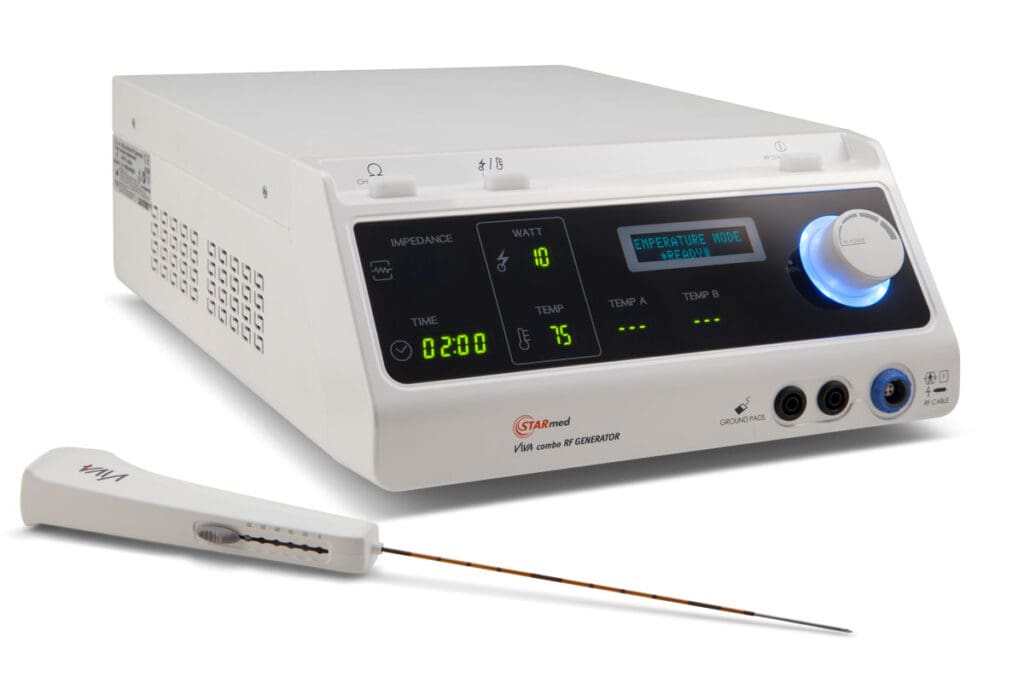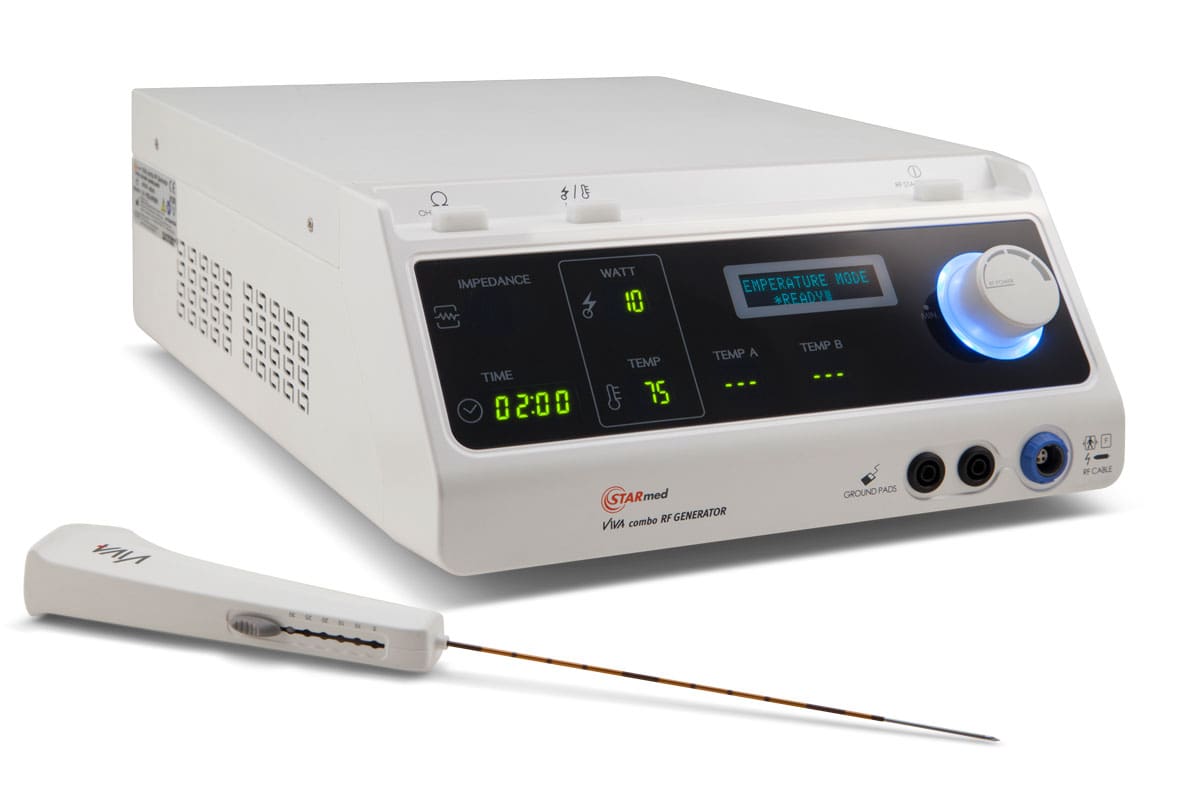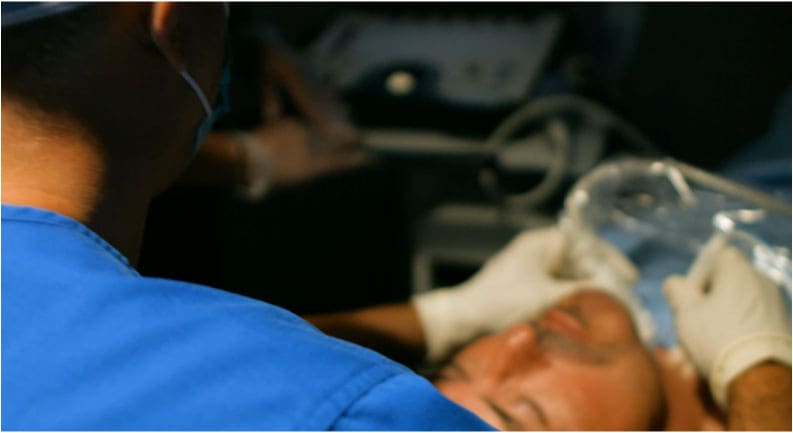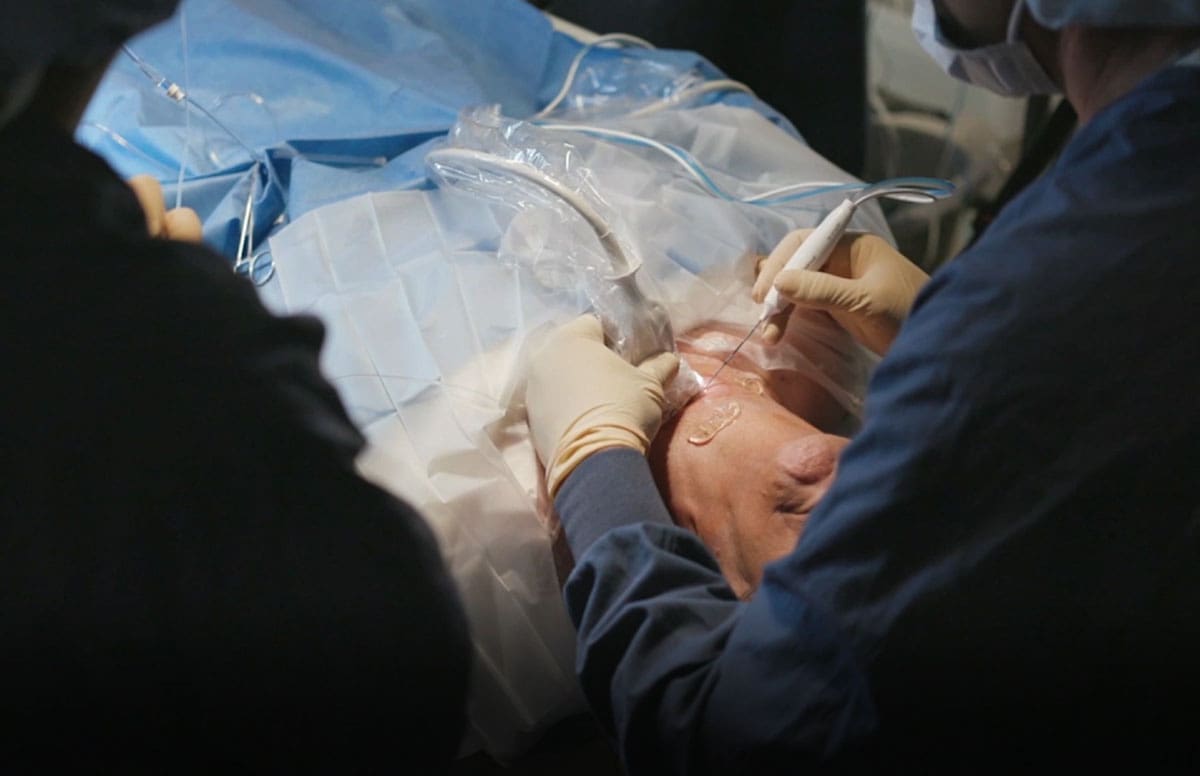Medical technology is constantly evolving, including the rise of thermal ablation devices. Thermal ablation devices are changing the way we treat benign and malignant tumors.
By targeting lesions at the source with minimal to no incisions, thermal ablation technology is becoming a safe alternative to traditional surgical procedures that can be more invasive and pose more risks to the patients.
Today, thermal ablation is still a growing technology in treating cancer that is not responsive to chemotherapy and cancers that traditional surgery cannot access. Here’s how thermal ablation devices are revolutionizing how we improve patient care and quality of life.
What Is a Thermal Ablation Device?
Thermal ablation uses extremely high temperatures to destroy lesions in targeted areas like the thyroid, uterus, or biliary ducts. During thermal ablation, an electrode enters the tissue, guided to the treatment area using CT scanning or ultrasound imaging. The thermal ablation device then emits radiofrequency (RF) energy, or other forms of energy, to destroy unwanted tissues and cells.
Thermal ablation devices offer precise treatment with minimal risk of damaging surrounding healthy tissue. Because most thermal ablation doesn’t involve incisions, it drastically decreases the risk of scarring and a lengthy recovery.
Clinical evidence shows radiofrequency thermal ablation is a safe and effective treatment for various conditions, including thyroid lesions, cancerous endoluminal cells, and uterine fibroids.
When used in early-stage tumors, thermal ablation is more successful at permanently destroying lesions. Thermal ablation can also help destroy advanced tumors. Still, additional ablation procedures may be needed to destroy lesions that continue to progress.
How Are Thermal Ablation and Cryoablation Different?
Cryoblation and thermal ablation devices both utilize extreme temperatures to destroy cells. However, cryoablation is a form of cryotherapy that uses extremely cold gas or liquid nitrogen to freeze and destroy tumors.
Cryoblation is often used to treat skin, liver, kidney, lung, and prostate cancer. The procedure can also successfully reduce breast and cervical cancer lesions .11
Innovative Techniques Used With Thermal Ablation Devices
Different types of thermal ablation devices are continuously finding new ways to treat benign and cancerous lesions. Innovative thermal ablation techniques include:
- Radiofrequency ablation (RFA): Using radio waves to generate heat, RFA effectively targets tumors and growths in organs like the liver, thyroid, endoluminal, and uterus.
- Microwave ablation (MWA): This method uses microwaves to quickly create intense heat that can target and destroy larger tumors.2
- Laser ablation: Using highly focused laser beams, this form of ablation helps destroy cancerous cells near critical structures that need intense precision.

When used to treat thyroid nodules, Radiofrequency Ablation (RFA) devices are shown to significantly reduce nodules in 6 to 12 months.3 Fibroid radiofrequency ablation, a thermal ablation method used to remove uterine fibroids, also significantly reduced fibroid size and symptoms 3 months after treatment.4
What Are the Side Effects of Thermal Ablation?
Radiofrequency thermal ablation is minimally invasive and has minimal risk of complications. Because it doesn’t require large incisions and directly targets lesions, it also reduces the risk of scarring.
However, as with any medical procedure, thermal ablation side effects are possible. Some patients may experience minor pain, swelling, or bruising following treatment. However, these side effects are usually resolved within a few days after the procedure. Other potential complications of thermal ablation include bleeding, infection, or tissue damage, typically less severe compared to traditional surgery 5 6
How Thermal Ablation Devices Revolutionize Recovery
One of the most innovative outcomes of ablation therapy is how it improves patients’ quality of life. While often necessary, invasive surgery can damage surrounding tissue and can include a long and painful recovery time. Since thermal ablation is minimally invasive, the treatment helps significantly decrease patient discomfort, scarring, and recovery time. Using local anesthesia also lowers the patient’s risk of complications during surgery.
Depending on the treatment, patients often leave the hospital that same day they receive ablation therapy. Avoiding intensive surgery with thermal ablation also helps improve patient quality of life and recovery time.
What Thermal Ablation Strategies Are Being Researched to Treat Cancer?
Thermal ablation treatments used to treat cancer are constantly evolving. For example, endoluminal ablation offers another palliative care option for patients with cholangiocarcinoma (CCA) and pancreatic ductal adenocarcinoma (PDAC) to improve quality of life. Research shows endoluminal radiofrequency ablation improves biliary drainage and improves survival rates.7 Additionally, the treatment minimally damages delicate biliary ducts that were once completely inaccessible through surgery.8
Researchers have currently been studying the following thermal ablation strategies to help people treat cancer:
- Nanoparticle-mediated ablation: Photothermal therapy, magnetic hyperthermia therapy, and cryoablation therapy use high heat or extreme cold to destroy cancer stem cells (CSCs), which are generally resistant to chemotherapy and radiotherapy. These treatments also help minimize damage to healthy tissue.9
- Immuno-ablation: Research shows combining immunotherapy techniques with thermal ablation immunotherapy can help boost the immune system’s attack on cancer cells.10
- Multimodal ablation: Combining different ablation techniques can help providers destroy tumors more precisely and effectively. Studies show multimodal ablation helps preserve renal function and improve cancer survival rates in patients with renal cancer.11
STARmed America: A Thermal Ablation Devices Market Leader
Ablation is a growing technology in improving thyroid and fibroid care. STARmed America has always been a thermal ablation leader with FDA-cleared radiofrequency ablation technologies for fibroid; and thyroid lesions. We are also the first company to introduce Thyroid RFA in the USA.
Our innovative ELRA Endo Luminal Radiofrequency Ablation catheter also helps improve quality of life in patients with hepatic, biliary, or pancreatic unresectable endoluminal lesions.
At STARmed America, we partner with healthcare providers to find the best minimally invasive and safe treatments for your patients. For more information on STARmed America thermal ablation devices, we provide consultations to learn how our technology can seamlessly integrate into your treatment plans.
Contact a STARmed representative to learn more about our RFA technologies.
REFERENCES
- Erinjeri, J. P., & Clark, T. W. (2010). Cryoablation: mechanism of action and devices. Journal of vascular and interventional radiology : JVIR, 21(8 Suppl), S187–S191. https://doi.org/10.1016/j.jvir.2009.12.403
- Gala, K. B., Shetty, N. S., Patel, P., & Kulkarni, S. S. (2020). Microwave ablation: How we do it?. The Indian journal of radiology & imaging, 30(2), 206–213. https://doi.org/10.4103/ijri.IJRI_240_19
- Kandil, E., Omar, M., Aboueisha, M., Attia, A. S., Ali, K. M., Abu Alhuda, R. F., Issa, P. P., Wolfe, S., Omari, S., Buti, Y., Abozaid, O., Toraih, E., Shama, M. A., Lee, G., Tufano, R. P., & Russell, J. O. (2022). Efficacy and Safety of Radiofrequency Ablation of Thyroid Nodules: A Multi-institutional Prospective Cohort Study. Annals of surgery, 276(4), 589–596. https://doi.org/10.1097/SLA.0000000000005594
- Turtulici, G., Orlandi, D., Dedone, G., Mauri, G., Fasciani, A., Sirito, R., & Silvestri, E. (2019). Ultrasound-guided transvaginal radiofrequency ablation of uterine fibroids assisted by virtual needle tracking system: a preliminary study. International journal of hyperthermia : the official journal of European Society for Hyperthermic Oncology, North American Hyperthermia Group, 35(1), 97–104. https://doi.org/10.1080/02656736.2018.1479778
- Huang, Q., Pang, M., Zeng, Q., He, X., Zheng, R., Ge, M., & Li, K. (2022). The frequency and risk factors of major complications after thermal ablation of liver tumours in 2,084 ablation sessions. Frontiers in surgery, 9, 1010043. https://doi.org/10.3389/fsurg.2022.1010043
- Bowles, B. J., Machi, J., Limm, W. M., Severino, R., Oishi, A. J., Furumoto, N. L., Wong, L. L., & Oishi, R. H. (2001). Safety and efficacy of radiofrequency thermal ablation in advanced liver tumors. Archives of surgery (Chicago, Ill. : 1960), 136(8), 864–869. https://doi.org/10.1001/archsurg.136.8.864
- Jarosova, J., Zarivnijova, L., Cibulkova, I., Mares, J., Macinga, P., Hujova, A., Falt, P., Urban, O., Hajer, J., Spicak, J., & Hucl, T. (2023). Endoluminal radiofrequency ablation in patients with malignant biliary obstruction: a randomised trial. Gut, 72(12), 2286–2293. https://doi.org/10.1136/gutjnl-2023-329700
- Laleman, W., van der Merwe, S., Verbeke, L., Vanbeckevoort, D., Aerts, R., Prenen, H., Van Cutsem, E., & Verslype, C. (2017). A new intraductal radiofrequency ablation device for inoperable biliopancreatic tumors complicated by obstructive jaundice: the IGNITE-1 study. Endoscopy, 49(10), 977–982. https://doi.org/10.1055/s-0043-113559
- Pan, Y., Liu, L., Rao, L., & Chen, X. (2022). Nanomaterial-mediated ablation therapy for cancer stem cells. Matter, 5(5), 1367–1390. https://doi.org/10.1016/j.matt.2022.02.015
- Slovak, R., Ludwig, J. M., Gettinger, S. N., Herbst, R. S., & Kim, H. S. (2017). Immuno-thermal ablations – boosting the anticancer immune response. Journal for immunotherapy of cancer, 5(1), 78. https://doi.org/10.1186/s40425-017-0284-8
- Chan, V. W., Lenton, J., Smith, J., Jagdev, S., Ralph, C., Vasudev, N., Bhattarai, S., Lewington, A., Kimuli, M., Cartledge, J., & Wah, T. M. (2022). Multimodal image-guided ablation on management of renal cancer in Von-Hippel-Lindau syndrome patients from 2004 to 2021 at a specialist centre: A longitudinal observational study. European journal of surgical oncology : the journal of the European Society of Surgical Oncology and the British Association of Surgical Oncology, 48(3), 672–679. https://doi.org/10.1016/j.ejso.2021.10.022





